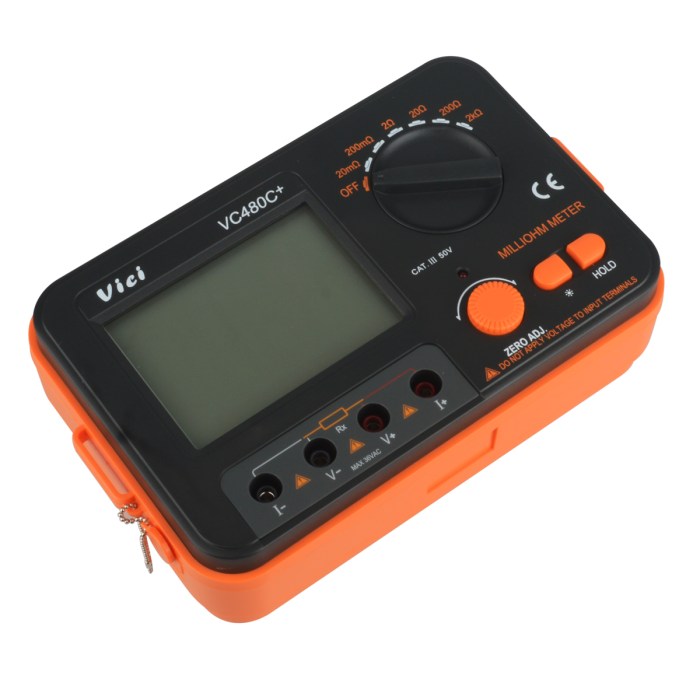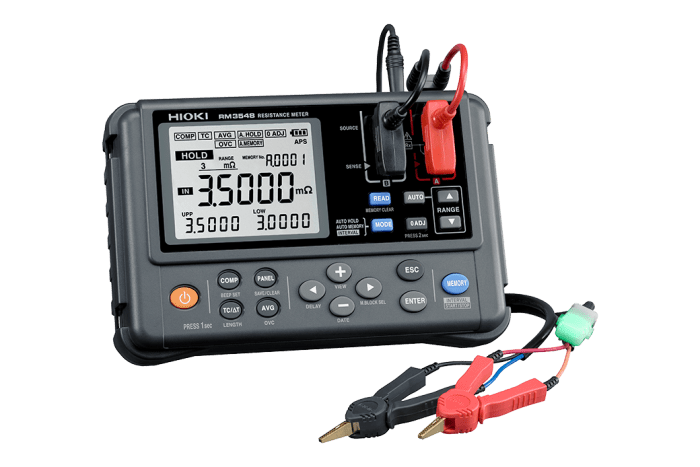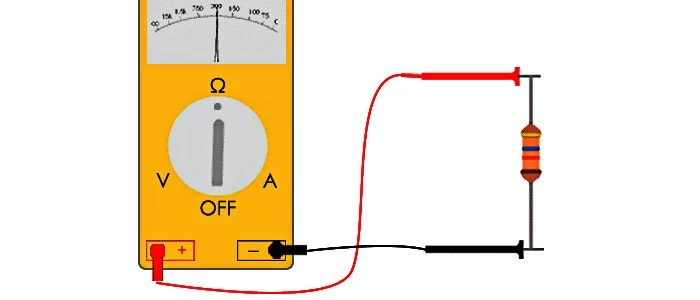When measuring resistance with an ohmmeter asvab – When measuring resistance with an ohmmeter, precision and accuracy are paramount. This comprehensive guide delves into the intricacies of ohmmeter usage, empowering you with the knowledge and techniques to obtain reliable resistance measurements.
From understanding the fundamentals of ohmmeters to interpreting readings and troubleshooting common issues, this guide provides a thorough exploration of resistance measurement, ensuring your success in electrical and electronic applications.
Ohmmeter Basics

An ohmmeter is a device used to measure the resistance of a circuit or component. It works by applying a known voltage across the circuit and measuring the resulting current. The resistance is then calculated using Ohm’s law: R = V/I, where R is resistance, V is voltage, and I is current.
There are two main types of ohmmeters: analog and digital. Analog ohmmeters use a needle to indicate the resistance value, while digital ohmmeters display the resistance value on a digital display.
Analog ohmmeters are typically less expensive than digital ohmmeters, but they are also less accurate. Digital ohmmeters are more accurate, but they can be more difficult to use.
Measuring Resistance with an Ohmmeter

To measure resistance with an ohmmeter, follow these steps:
- Set the ohmmeter to the correct range. The range should be high enough so that the resistance value is not off-scale.
- Connect the ohmmeter leads to the circuit or component. The polarity of the leads does not matter.
- Read the resistance value on the ohmmeter display.
When measuring resistance, it is important to take the following safety precautions:
- Do not measure resistance on a live circuit.
- Do not touch the ohmmeter leads with your bare hands.
- Use proper handling techniques to avoid damaging the ohmmeter.
Factors Affecting Resistance Measurements
Several factors can affect resistance measurements, including:
- Temperature:Resistance can change with temperature. As temperature increases, resistance typically increases.
- Lead resistance:The resistance of the ohmmeter leads can affect the resistance measurement. To minimize the effect of lead resistance, use short, thick leads.
- Contact resistance:The resistance between the ohmmeter leads and the circuit or component can affect the resistance measurement. To minimize the effect of contact resistance, use clean, sharp probes.
To minimize errors caused by these factors, it is important to use proper measurement techniques and to calibrate the ohmmeter regularly.
Interpreting Ohmmeter Readings

Ohmmeter readings can be interpreted to determine the resistance value of a circuit or component.
The following table shows some common resistance values and their implications:
| Resistance Value | Implication |
|---|---|
| 0 ohms | Short circuit |
| Low resistance (less than 1 ohm) | Good conductor |
| High resistance (greater than 1 megohm) | Insulator |
| Open circuit | Infinite resistance |
Troubleshooting Ohmmeter Measurements: When Measuring Resistance With An Ohmmeter Asvab

If you are having trouble getting an accurate resistance measurement, there are a few things you can check:
- Make sure that the ohmmeter is set to the correct range.
- Check the ohmmeter leads for damage.
- Clean the probes of the ohmmeter.
- Calibrate the ohmmeter.
If you are still having trouble getting an accurate resistance measurement, you may need to replace the ohmmeter.
Q&A
What is the purpose of an ohmmeter?
An ohmmeter is an instrument used to measure the electrical resistance of a component or circuit, providing insights into its conductivity and functionality.
How do I minimize errors when measuring resistance?
To minimize errors, ensure proper contact between the ohmmeter probes and the component, account for temperature variations, and use a high-quality ohmmeter with appropriate measurement range.
What are common problems encountered when measuring resistance?
Common problems include open circuits, short circuits, incorrect probe connections, and component damage. Troubleshooting techniques involve isolating the issue and identifying the root cause.